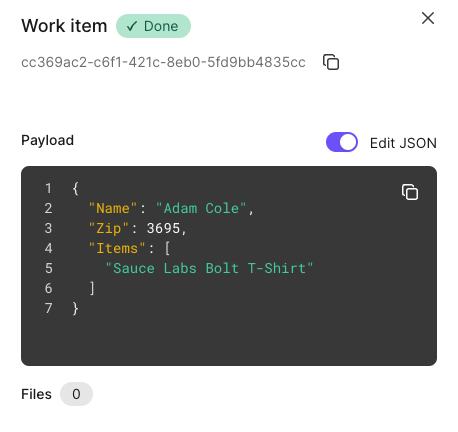Unattended Automations
Unattended automation in short mean automation processes where a human is not needed during the execution. Unattended automations in Robocorp consist of:
Processesthat contain the configurations of steps in the process and what is done in each step.Workersthat provide the place where the process steps are executed.Robotsthat contain the automation logic that is configured for each step in the process.
Unattended automations can work in the background without human intervention and provide a lot of power in scaling, parallel execution, etc.
What is the difference between attended and unattended automation?
Processes
In the Control Room, the main construct of unattended automation is the Process. It can be considered to be the frame that the orchestration level of automations are built against and enables things like deploying, scheduling, and managing the business data (Work Items) processed by the robots.

The process consists of Steps, which can be thought of as individual parts of the process that make sense to split into different functional parts for a conceptual or technical reason (e.g. because of parallel processing or needing a specific target system). Steps consist of a Worker and a Robot, and can have different configurations assigned to them.
Another essential part of the process is the Work Items, which represent unique data objects in your business process. An example of Work Item usage could be if your business process is about handling customer orders; one order could be assigned as one Work Item. Using Work Items for process data enables fine-grained exception handling, analytics, and convenient scaling of the workload over multiple Workers.

The simplest possible process is just a single Step with a Worker and Robot assigned to it, but by utilizing Work Items and multi-step workflows, you can streamline your unattended automation, improve error handling, and optimize resource allocation. This will ultimately result in a more efficient and reliable system that will better meet your business needs.
A common way to use Steps and Work Items in the Process is the Producer-Consumer model, where the Producer step reads some input data (e.g Excel file containing orders, e-mail containing a list of users, or anything else), and creates Work Items for the Consumer step for processing based on the input data.
This best-practice pattern can be applied to most automation use cases, and e.g. the processing in the Consumer step can be scaled over multiple Workers by just adjusting the parallel executions setting in the configuration. The Control Room will keep track of the processing, and you will have all the possible failures conveniently available in the UI for troubleshooting or manual handling.
Unattended Workers
The Workers link opens up a list of your unattended workers. Clicking on an unattended worker will provide more information about it.
An unattended worker is a computing resource that can execute automation tasks. These computing resources could be of multiple types. Check out the Worker setups page for a better overview.